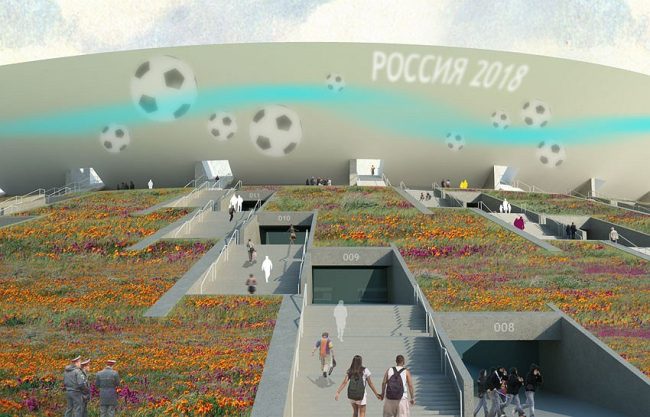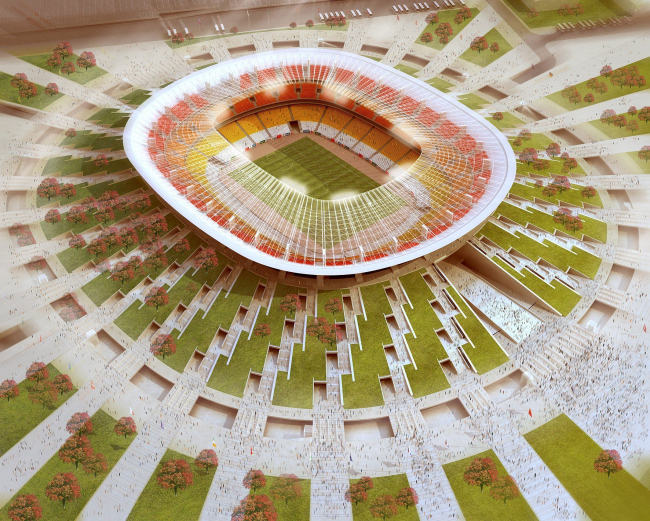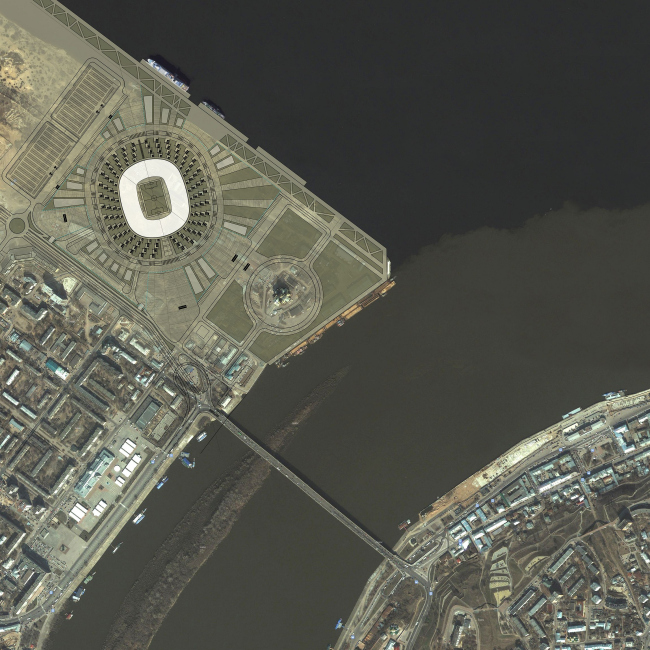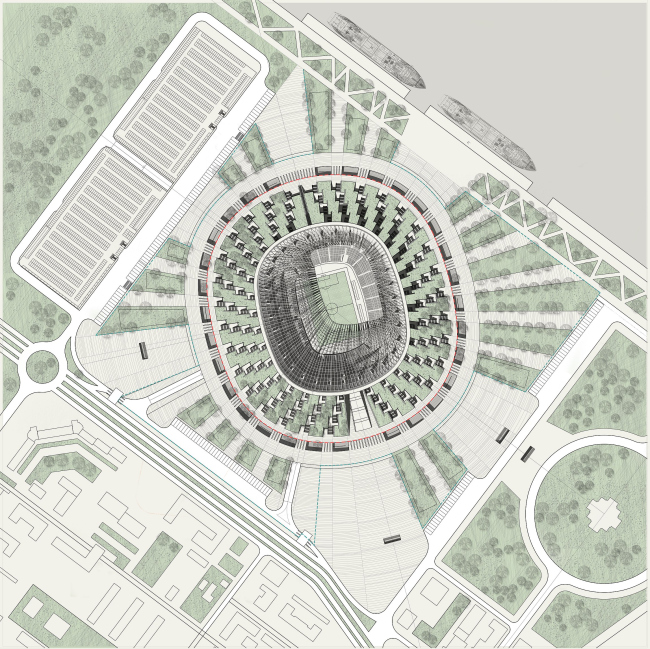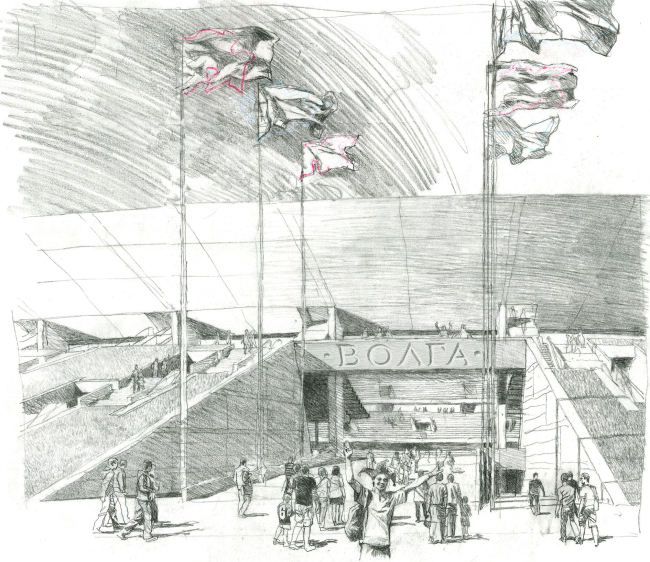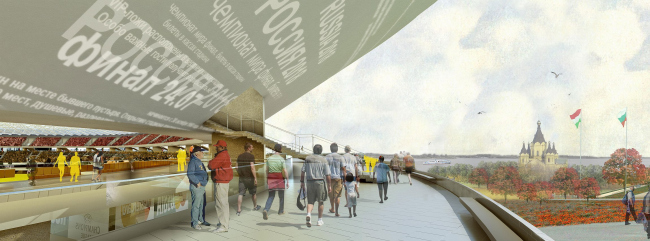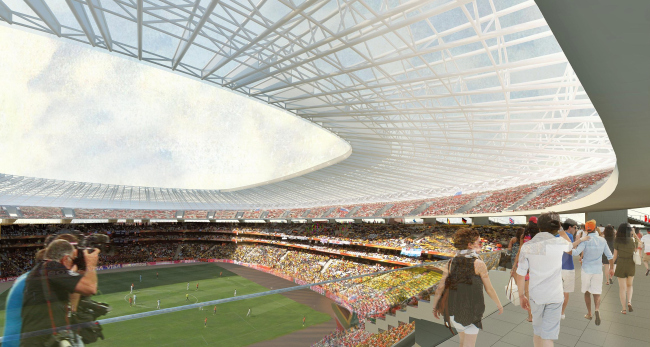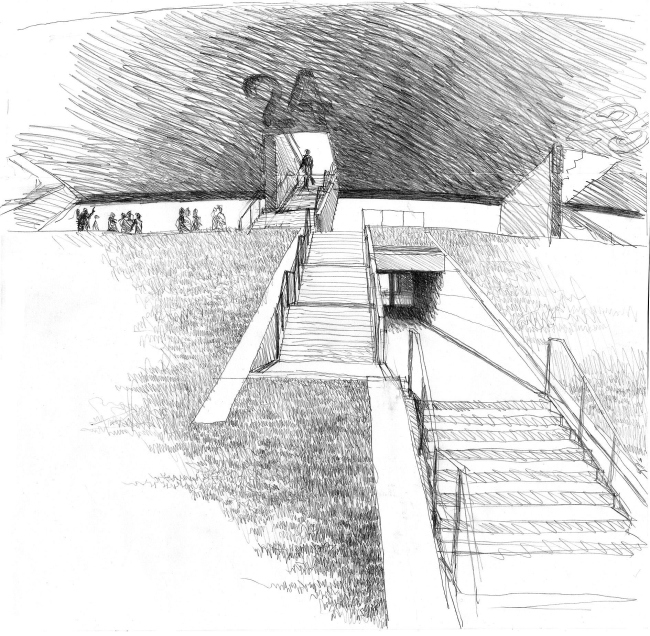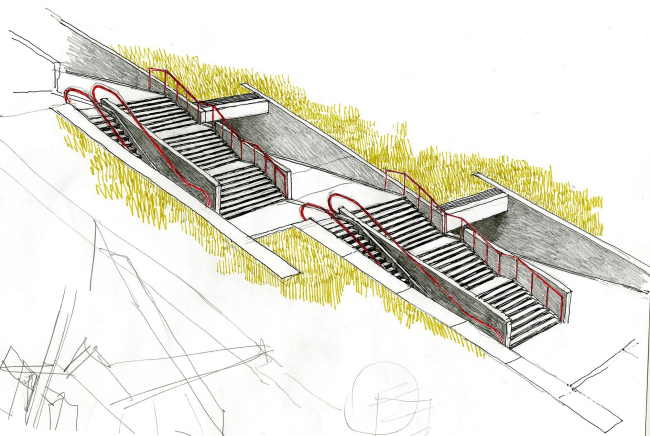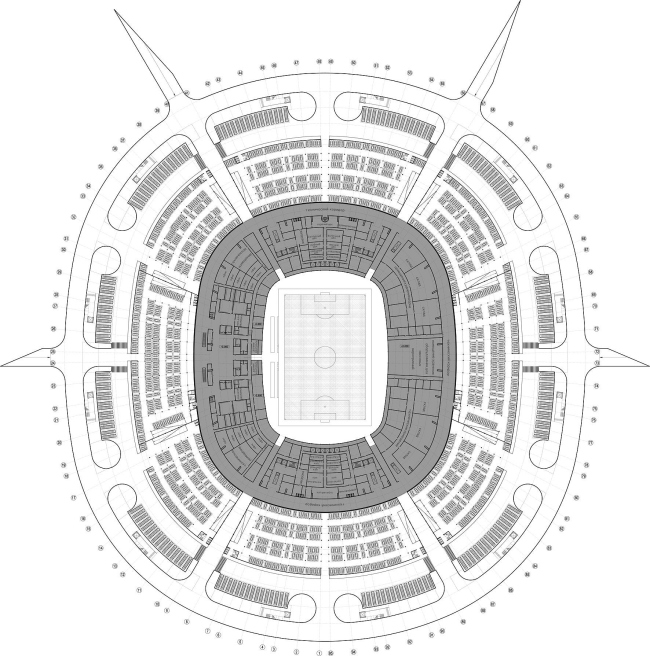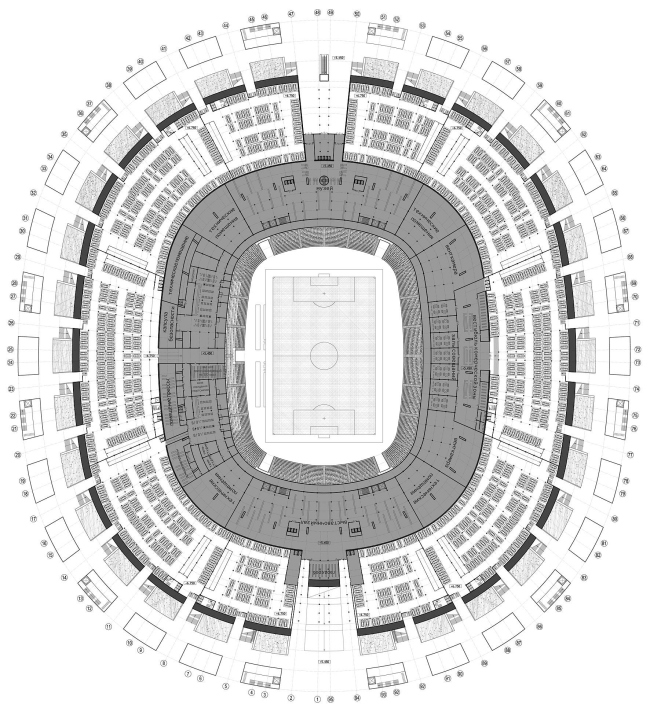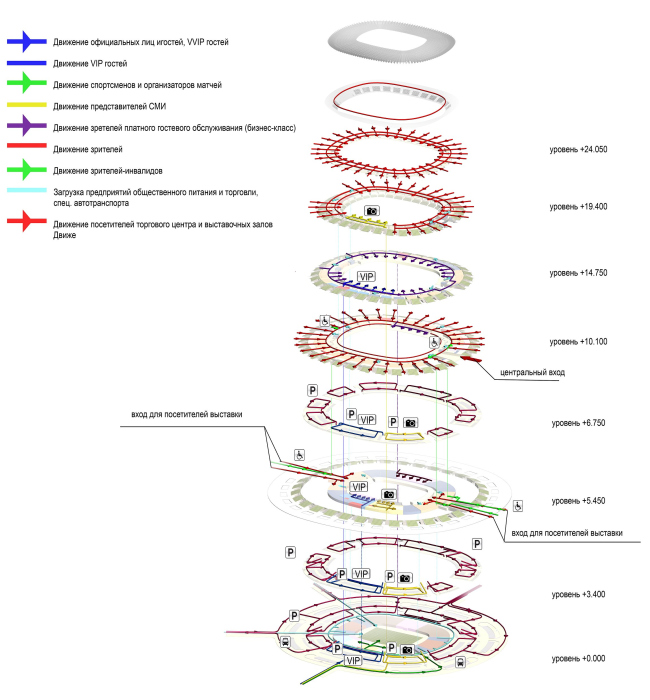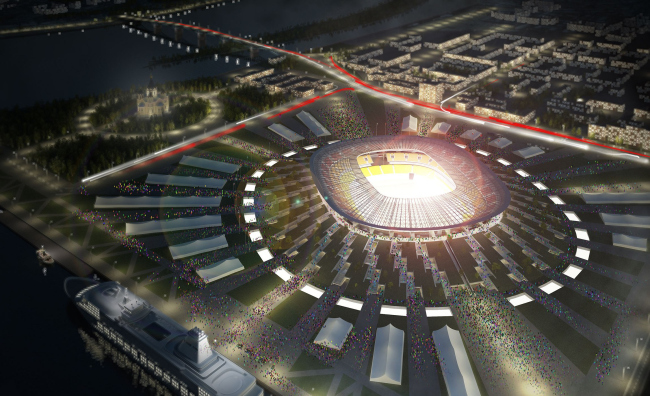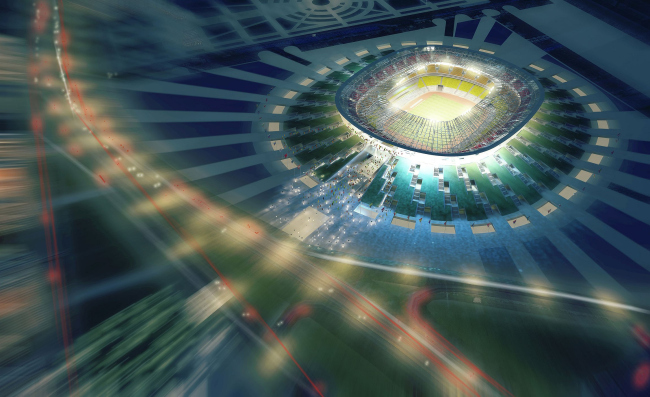|
Among other cities, the list of possible candidates to host FIFA World Cup in 2018 includes Nizhniy Novgorod. For the famous Nizhniy Novgorod’s “Strelka” (“Arrow”, place where the Oka flows into the Volga), “Studio 44” has designed a stadium in the shape of man-made green hill topped off with a white cup.
The construction site is located
on the left bank of the Oka right where it flows into the Volga,
its total area being 45.5
acres. Today, this part of Strelka area is but starting
to develop – from the southeast side it is bordered by the future extension of
Sovnarkomovskaya Street, from the northwest side – by the extension of
Bettencourt Street, and from the northeast – by the Volga embankment that is
now under construction. The fact that this territory is in need of some kind of
high-profile object, has long since been discussed – Strelka yields a beautiful
view from the water area of both rivers, and it plays an important part in many
of the local cityscapes. The idea to build a stadium here is arguably the best
possible solution for this area – one can hardly find such a dramatic typology
that presupposes such bold architectural experiments. But then again, “Studio 44” laid its main stress on the
ecological properties of the designed object.
“Studio 44” designs the football stadium
as a green hill in the heart of which lies the football field (105 x 65 m) with a three-level
amphitheater with 33 thousand spectator seats, while its top is crowned a
snow-white cup of the upper stands capable of receiving yet another 9 thousand
people. The architects surround the arena with the premises that serve the
participants of the game (sportsmen, coaches, judges, etc), as well as with
maintenance and administrative facilities serving the spectator infrastructure.
At the same time, the parking garages, cafes, shops, and toilets are scattered
over the different levels of the outer contour of the building – the architects
cover the terrace steps with topsoil, thanks to which the whole structure
starts to look like a giant cone-like gently sloping hill.
The green slopes of this hill are traversed by thirty stairways leading to the
stands of each spectator sector, and, shifted relatively to one another in a
staggered fashion, they form strikingly looking diagonal cutaways. Apart from the
stairways, the stadium’s vertical communications system includes elevators and
moving stairs in the main entrance area, where the hill grandly “opens up”. It
is these top 9-thousand-seat stands that will provide the arena with the total
capacity that is necessary for the organization of football games of the world’s
and Europe’s championships.
The pylons raise the upper stands three meters above the hill, which makes the
cup look like it hovers above the ground. The subliminal likeness to a UFO is
strengthened manifold by the stairways running along each of the pylons: in the
bottom of the “cup” the architects cut rectangular “portals”, out of which,
numerous ladders fall down to the ground.
The slopes of the hill will help the sport complex to maintain a comfortable microclimate,
accumulating warmth in the wintertime and providing the premises from
overheating in the summertime. Apart from that, the facades executed in the shape
of a terrace park will become the generators of fresh air and will provide an
unprecedented percentage of site landscaping, while the slopes of the green
hill and the passage over the viewing platforms will make it possible to
organize exciting architectural guided tours here. In other words, the stadium built
as a terrace park and having no shortage of viewing platforms and entertainment
spots will become not only the city’s epicenter of major sport events and a
high-profile sight but also a great attraction for people from all walks of
life. None
None
None
None
None
None
None
None
None
None
None
None
None
None
None
None
None
None
None
None
|


